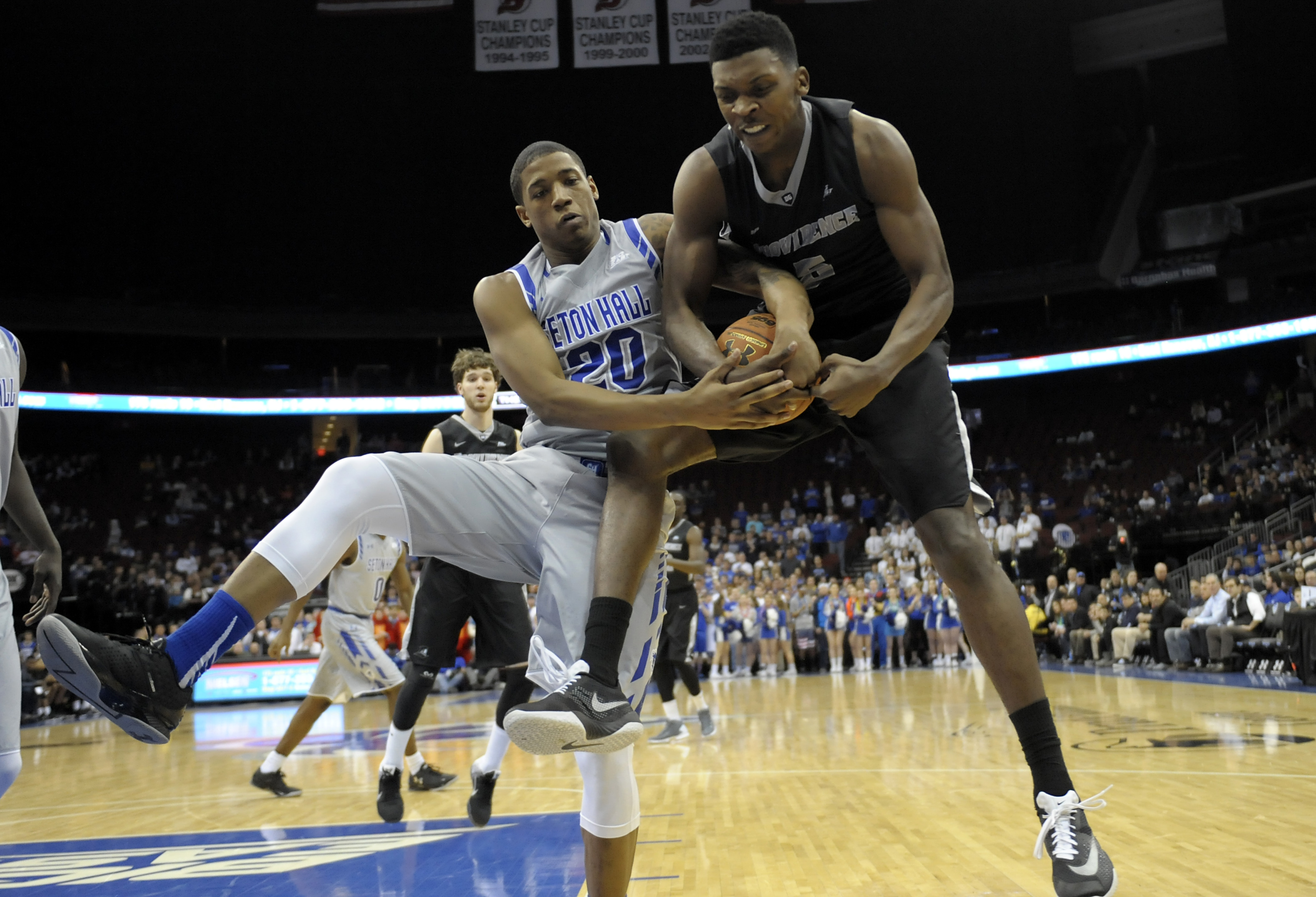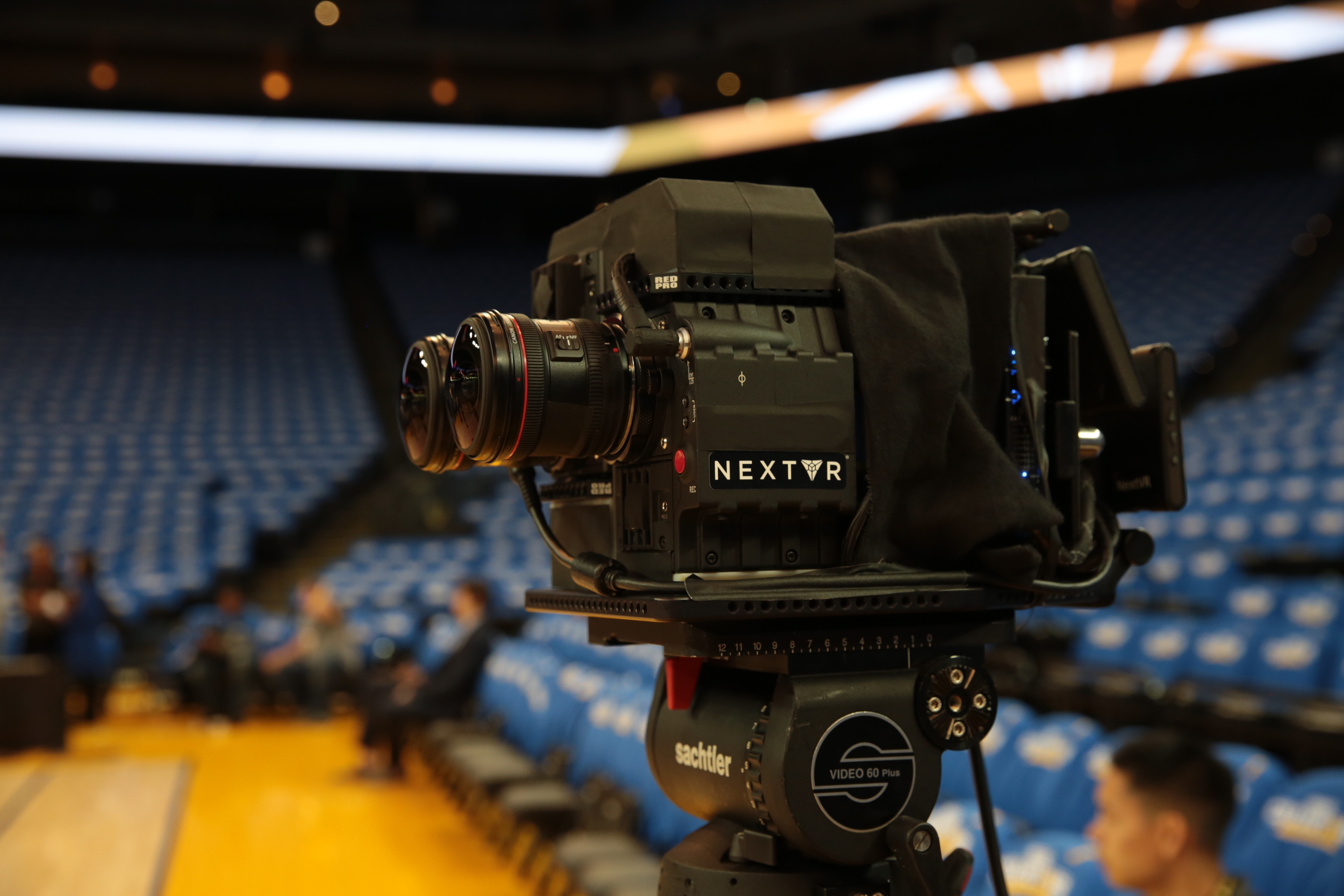March Madness Live In Virtual Reality With NextVR
Over the past two days I've snuck away from the office to watch college basketball, all without moving out of my chair. Thanks to the Samsung GearVR, Fox Sports and NextVR, I've been able to view live Big East tournament games as if I were court side, and able to move my seat to follow the action.
Although I've experienced some of NextVR's sports content before, this is the first time I've watched live action, and it's the first time the sport has been something I watch regularly. I'm thrilled with the idea, even if I'm not sure just yet if I could get used to it. And honestly, how can I know until I've tried it for a while?
NextVR launched in 2009, founded by some experts in stereoscopic imaging, and the company has received substantial funding along the way, including more than $30 million in Series A funding last year from Comcast and Time Warner venture arms, Peter Guber, RSE Ventures, The Madison Square Garden Company and Dick Clark Productions. The company made waves at the beginning of the current NBA season by broadcasting the Golden State Warriors' first game in VR. In mid-February, NextVR signed a five-year deal with Fox Sports, and the partnership has already delivered live VR coverage of the Daytona 500.
I'll probably return to this topic in the future to discuss some of the technology innovation that NextVR is using, including light field capture technology in its cameras and how that impacts your ability to experience a game. For now, these are really just a few observations about my experiences watching a couple of Big East basketball games.
Note that you can watch some of the remaining games if you have a GearVR and the smartphone to power it. Simply access the NextVR app, and you'll see the live content as part of the lineup. (I'd be anxious to hear what you think.)
One of the big advantages is being "court side." The cameras seem to be set up behind the baskets, on the stanchions, so you can view the incoming action up close, and also at mid court. As the play begins to go the other way (off a steal, rebound, or made basket), your view changes to around mid-court as if you're in the front row, and then moves back behind the other basket as the play begins to develop. Thus, at all times, you're in the optimal position to see the action, and it's much more immersive than watching on television. You're also hearing the play-by-play from the Fox Sports announcers.
The hand-off from court side to behind-the-basket is fairly seamless, even on a fast break; it's sort of a quick fade rather than an abrupt camera cut, but I never really seemed to miss any action. Someone must be manually calling for the camera changes, because on a couple of fast plays it didn't switch cameras -- and for good reason, because a camera switch would have risked missing something in those specific instances.
Get Tom's Hardware's best news and in-depth reviews, straight to your inbox.
In short, watching a game this way was pretty mesmerizing. My team is in the Big 10, and I'm curious how I'd feel about the experience when a team I really care about is portrayed through this VR experience.
There are some downsides. First, while the ball, the players, coaches, and referees are unmistakable, the quality of the images isn't quite the resolution I expected. (The pictures included above are not representative of the resolution the GearVR is able to render.) Second, just like sitting court side, there were times when my view was blocked by a player positioned in front of the camera. And finally, unlike watching on TV, there's no little box showing the score or the time.
This last point was actually the most disconcerting. You can look up at the jumbo-tron to see the score, but that takes your eyes off the action, and the score is actually difficult to see up there anyway. It seems like this is just a graphic that NextVR could easily grab from the Fox feed and put into view.
The light field technology is supposed to help see around objects, players, and into the action in unique ways, and I'm certain NextVR is going to continue to improve some of the aspects of content viewing that we've grown accustomed to on TV sets. Further, as the devices and PCs that power the content get better (imagine NextVR on the Oculus Rift, with higher resolution and more graphics horsepower), it may be harder to justify ponying up $100 or more to go to a basketball game.
Of course, there's also a social aspect to sporting event viewing that is taken away once you're under the spell of a VR HMD.
Fritz Nelson is the Editor-In-Chief of Tom's Hardware. Follow him on Twitter, Facebook and Google+. Follow us on Facebook, Google+, RSS, Twitter and YouTube.
-
computerguy72 It will be interesting to see how much this improves over the GearVR on the Vive and CV1. On a pc you can do image processing, distortion correction and more to improve the experience. Also the Vive and CV1 have fresnel lenses with big sweet spots which should give it a more video like quality. I tried some similar things on the DK2 but this is an instance where the SDE gets me. Very excited to test NextVR when the new HMD's are available.Reply



